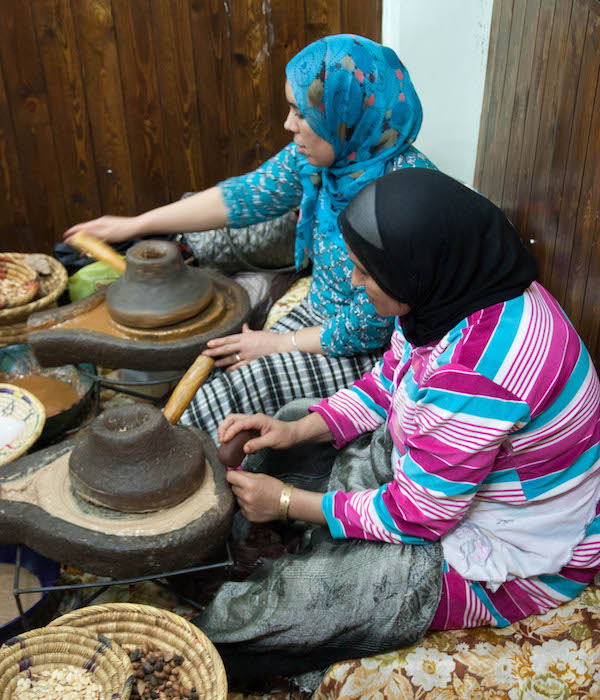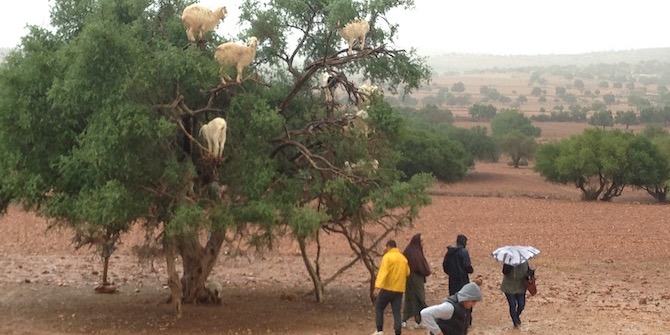by Kate Meagher

The World Development Report 2020, Trading for Development in the Age of Global Value Chains, warns that in the current environment of technological change and rising protectionism, the developmental mission of global value chains (GVCs) is under threat. Despite some social and environmental challenges, WDR 2020 emphasises the role of GVCs in connecting not just formal but informal firms and workers to capital, global markets, and improved skills and technologies. However, in the wake of the Rana Plaza disaster, repeated child labour scandals in the value chains of global apparel firms, and the increasing association of GVCs with poverty and modern slavery, what is really in doubt is the developmental capacity of global value chains. As evidence mounts of the adverse effects of GVCs, the claim that they represent a ‘benign escalator’ to prosperity for informal firms, farmers and women in developing countries has become increasingly difficult to defend.
A central plank in the rehabilitation of GVCs is the contention that enhancing seamless connectivity will improve the diffusion of gains to small firms and farmers in developing countries. Just as the WDR 2019 used digital connectivity to conjure an ‘illusion of inclusion’ for developing country workers, WDR 2020 spins an ‘illusion of diffusion’ for poor workers at the bottom of GVCs. Yet narratives of seamlessness gloss over the regulatory dynamics that determine how gains are actually distributed along the chain. Over a decade of research by Khalid Nadvi, Stephanie Barrientos and others has demonstrated that competitive pressures within GVCs create incentives to cut costs through increased use of outsourcing, temporary workers, and labour brokers, creating ‘poverty nodes’ at the bottom of GVCs.
In rural Africa, efforts at maximising seamless connections between global firms and informal rural workers and producers tend to entrench rather than alleviate poverty and informality for those working at the bottom of GVCs. Yet these worrying developments have been increasingly obscured by new narratives about decent work and second-best institutions. The integration of informal workers at the bottom of GVCs is now presented as an upward path to ‘decent work’ rather than a scandal. Jens Lerche has observed that concerns about ‘free’ and ‘unfree labour’ are redrawing the boundaries of decent work in ways that legitimate the inclusion of informal workers in GVCs as long as they are not children or slaves. This perspective is heightened by the Global Slavery Reports of the former Walk Free Foundation (now the Minderoo Foundation) run by an Australian mining magnate and his wife, which focuses attention on slavery as the key ill generated by GVCs, while ignoring the much wider problem of indecent informal work endemic in corporate value chains.
In the process, informal workers are increasingly viewed as needy pools of cheap labour and second-best institutions that can be tapped through innovative partnerships with NGOs, social enterprises or local leaders. Yet, global linkages with local informal economies and precarious workers don’t just connect informal actors to jobs and resources. GVCs cannibalise local value chains, reshape property rights, and crowd out activities and actors that are extraneous to the needs of global lead firms and large-scale suppliers. More attention is needed to how GVCs restructure local labour regimes and commercial systems in the quest for seamlessness, often disrupting vulnerable livelihoods and unleashing social tensions through the realignments needed to smooth the working of the chain.
A focus on women argan oil producers in Morocco illustrates the risks of prioritising frictionless linkages over decent work. Argan oil is a product of the fragile argan forests unique to south-western Morocco, where the oil is extracted by rural Amazigh (Berber) women through a labour-intensive artisanal process. The international cosmetics industry turned argan oil into a prized global commodity in the 1990s. Exports skyrocketed, turning argan oil into the world’s most expensive edible oil, with a global market value expected to reach US$ 1.79 billion by 2022. Connecting women argan oil producers into global markets was framed by multinational firms and European donors as a ‘triple win’ for gender empowerment, rural development and environmental sustainability.

But the creation of a sufficiently frictionless global value chain required the restructuring of local production arrangements, marketing networks and property rights around the needs of global firms. The specific skills of local women are essential to cracking the hard argan nut. Yet the efficient operation of GVCs requires continuous and low-cost supply in place of seasonal local production. The European Union and the German donor now known as GIZ worked with the Moroccan government to create women’s cooperatives in place of household production systems. Cooperatives introduced new machinery and processing standards, and reoriented marketing networks from local traders to international buyers. This involved cutting men out of their role as traders of household argan oil production, and diverting argan oil from local markets. While cooperatives generated some improvements in women’s personal incomes and girls’ education, they also intensified demands on women’s labour, creating new tensions within the household and disrupting environmental management.
The empowering potential of women’s cooperatives was undermined by certification requirements and the rise of more commercialised cooperatives. Competition from ‘commercial cooperatives’, and the increasing mechanisation of argan oil production have kept labour costs low, while intensifying work regimes, which could involve as much as 10–12 hours a day when under pressure to meet supply quotas. Women’s average incomes from argan oil remain below minimum wage, while the huge increase in the price of argan oil is captured by firms higher up the chain. Worse still, the international hype surrounding argan oil obscured the fact that it concentrated women’s labour in a low-status, low-return activity locally regarded as a coping strategy, not a path out of poverty. A Moroccan news article observed that argan oil ‘may be “liquid gold” but it is not the local women at the end of the rainbow’.
The demands of seamless connectivity also reshaped local property rights around the global need to stabilise access to argan fruits. Customary use rights came under pressure from the introduction of new conservation practices and increased demand from cooperatives, leading to community conflicts and enclosures. UNESCO introduced further restrictions on use rights by designating argan forests a United Nations Biosphere Reserve in 1998. Ultimately, the use of GVCs to promote an environmentally sustainable system of poverty alleviation backfired. In rural communities, the strategy of ‘conservation through commercialisation’ triggered excessive and aggressive harvesting that continues to threaten argan forests while doing little to reduce poverty. It also triggered a conservative Islamic backlash in some communities owing to social and economic tensions created by insufficiently sensitive restructuring of household production systems and forest management.
As the argan oil saga shows, the seamless connections celebrated by WDR 2020 are less about deregulation than re-regulation around the interests of corporate profit rather than local livelihoods and equitable distribution of gains. Global connections, presented as conduits of value and opportunities, often operate as siphons that extract labour and resources from precarious social groups. In Morocco, a host of intermediaries ranging from donors to local cooperatives are pressed into service to smooth global linkages and cheapen access to oil and rural women’s labour. Recognising that labour’s share of the gains from GVCs is declining, WDR 2020 calls for the formation of local associations and cooperatives, touted as a means of reducing transaction cost for global lead firms, not for protecting labour rights or improving collective bargaining for a better share of the price. In fact, WDR 2020 advocates greater deregulation of labour to promote employment by reducing labour costs. The use of legitimating narratives of gender empowerment, poverty alleviation and sustainability cast a veil of philanthropy over the underlying capital-labour relations through which global firms seek to employ poor informal workers on precarious terms. If the WDR is serious about ensuring that GVCs realise their mission of promoting development and poverty alleviation, they would do better to mobilise donors, cooperatives and other unconventional partners to press for decent work and a fair distribution of gains rather than using them to erode labour protection and facilitate global access to cheap informal labour.
This is part of a series emerging from a workshop on ‘Mediterranean Production Networks and the Export Economies of North Africa‘ held at LSE on 17 January 2020. Read the introduction here, and see the other pieces below.
In this series:
- Introduction by Shamel Azmeh
- Is Automation Stealing Manufacturing Jobs? Evidence from South Africa’s Apparel Industry by Jostein Hauge and Christian Parschau
- COVID-19, Digitalisation and Manufacturing-Led Development in African Countries by Karishma Banga
- Luxury Brands’ Roles in Pathways to Sustainable Growth: Prospects for Egypt’s Cotton Sector by Rachel Alexander
- Have North African countries upgraded and diversified in apparel and automotive GVCs? by Thomas Bernhardt
- Varieties of Digitalisation in Automotive Supply Chains and Upgrading Prospects of Supplier Firms by Merve Sancak






